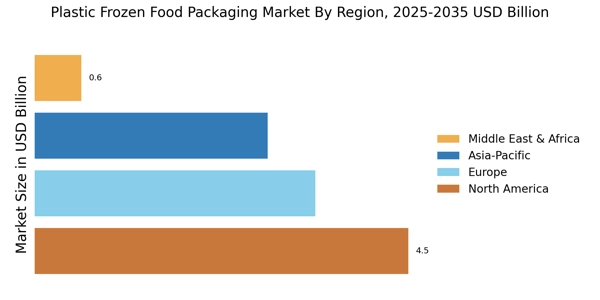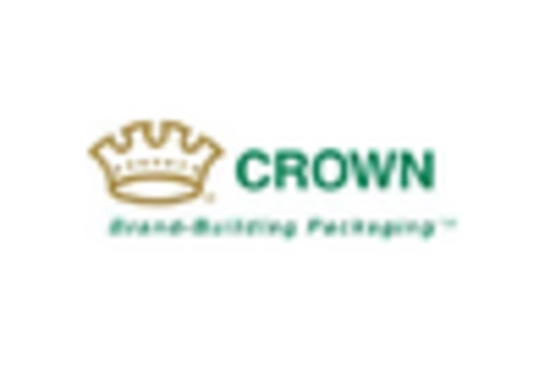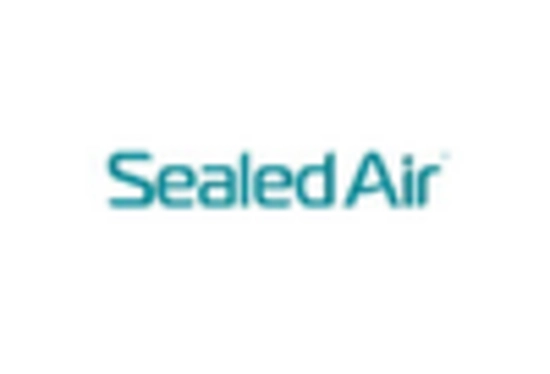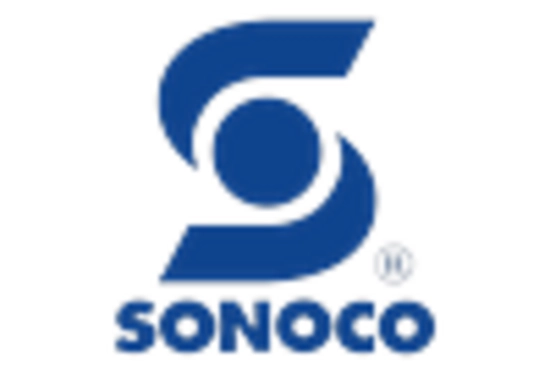Health and Wellness Trends
The growing focus on health and wellness among consumers is influencing the Plastic Frozen Food Packaging Market. As individuals become more health-conscious, there is a rising demand for frozen food products that are perceived as healthier options, such as organic and low-calorie meals. This trend is supported by market data indicating that the health-oriented frozen food segment has expanded by approximately 6% in recent years. Manufacturers are responding by developing packaging that highlights nutritional information and promotes health benefits. This alignment with consumer preferences for healthier choices is expected to drive further growth in the Plastic Frozen Food Packaging Market, as brands seek to cater to this evolving demand.
Growth of the Retail Sector
The expansion of the retail sector, particularly in supermarkets and hypermarkets, is a significant driver for the Plastic Frozen Food Packaging Market. These retail formats are increasingly dedicating shelf space to frozen food products, thereby enhancing their visibility and accessibility to consumers. Market analysis indicates that the retail sector for frozen foods has seen a steady increase, with a projected growth rate of around 5% annually. This growth is attributed to the rising consumer awareness of the benefits of frozen foods, such as nutritional value and convenience. As retailers continue to invest in frozen food sections, the demand for effective and attractive plastic packaging solutions is likely to rise, further propelling the Plastic Frozen Food Packaging Market.
Innovations in Packaging Technology
Technological advancements in packaging materials and processes are significantly impacting the Plastic Frozen Food Packaging Market. Innovations such as vacuum sealing, modified atmosphere packaging, and the development of biodegradable plastics are enhancing the functionality and sustainability of frozen food packaging. For instance, the introduction of smart packaging technologies that monitor freshness and temperature is gaining traction. Market data suggests that the adoption of these technologies could lead to a 10% reduction in food waste, thereby appealing to environmentally conscious consumers. As manufacturers strive to differentiate their products, the integration of advanced packaging solutions is expected to play a crucial role in shaping the future of the Plastic Frozen Food Packaging Market.
Rising Demand for Convenience Foods
The increasing consumer preference for convenience foods is a primary driver of the Plastic Frozen Food Packaging Market. As lifestyles become busier, consumers are gravitating towards ready-to-eat and frozen meal options. This trend is reflected in market data, which indicates that the frozen food segment has experienced a compound annual growth rate of approximately 4.5% over the past few years. The convenience offered by frozen foods, coupled with the extended shelf life provided by plastic packaging, enhances their appeal. Consequently, manufacturers are focusing on innovative packaging solutions that not only preserve food quality but also cater to the on-the-go lifestyle of modern consumers. This shift towards convenience is likely to continue influencing the dynamics of the Plastic Frozen Food Packaging Market.
E-commerce and Online Grocery Shopping
The surge in e-commerce and online grocery shopping is reshaping the landscape of the Plastic Frozen Food Packaging Market. As more consumers turn to online platforms for their grocery needs, the demand for frozen food products delivered directly to their homes is increasing. Market data reveals that online grocery sales have grown by over 30% in recent years, with frozen foods being a significant category. This shift necessitates robust packaging solutions that ensure product integrity during transit. Consequently, manufacturers are innovating packaging designs that not only protect frozen foods but also enhance the consumer experience. The ongoing growth of e-commerce is likely to continue driving demand within the Plastic Frozen Food Packaging Market.


















Leave a Comment